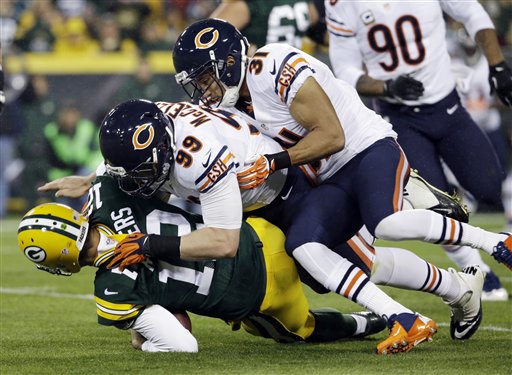The NFL and roughly 4,500 former players suing the league have reached a new settlement in the brain-injury lawsuit against the gridiron behemoth. The owners have agreed to lift a $675 million cap on funds paid out directly to former players as a result of the agreement.
Federal Judge Anita Brody had rejected the initial settlement, reached late last summer, out of a sense that player illnesses would outlast the pool of funds available to cover them. The numbers didn’t add up to the judge or to many impartial outside observers. The agreement designates specific amounts for suffering players, e.g., $5 million for a retiree struck at middle age with Lou Gehrig’s disease, depending upon the when disease afflicts the diagnosed athlete.
“This agreement will give retired players and their families immediate help if they suffer from a qualifying neurocognitive illness, and provide peace of mind to those who fear they may develop a condition in the future,” Christopher Seeger and Sol Weiss, lawyers for the plaintiffs, announced. “This settlement guarantees that these benefits will be there if needed, and does so without years of litigation that may have left many retired players without any recourse.”
Ten percent of the “retired players” suing the league never played a down in an official NFL game. Given that many neurological diseases lack a test to confirm them and can’t be diagnosed definitively in a clinical setting, the removal of the cap may make it easier for players–a significant percentage of whom never made it past first cuts in August–to go doctor shopping and win payments. Malingerers now can take from a theoretically unlimited fund coming directly from the pockets of owners rather than a finite pool reserved for the pockets of their suffering player peers.
Should the taxi-squad players, preseason cuts, and one-game wonders demonstrate legitimate evidence of neurological disorders, how can they prove that they suffer them because of the league they enjoyed a cup of coffee in rather than the youth, high school, college, and other professional leagues in which they may have competed? What role might genetics, car accidents, fist fights, alcohol, drugs, and other factors beyond football have played in their maladies?
Other problems abound. The animating principle of the suit, that football causes brain damage, finds far more boosters in newsrooms than laboratories.
A 2012 National Institutes of Occupational Saftey and Health (NIOSH) study of nearly 3,500 NFL retirees who played five or more seasons between 1959 and 1988 identified just twelve deaths directly from neurodegenerative diseases. The number of deaths from such causes among the peer group outside of football was ten. Fatalities from cancer, respiratory illness, heart disease, and diabetes–indeed, in fourteen of seventeen total categories–appeared lower in the athletes than in the men outside of professional football. Whereas the peer group suffered from an 18 percent mortality rate, just ten percent of the NFL group had passed away. Far from the game striking them dead before their times, as the NFL Players Association suspected when petitioning the feds to undertake the study, league veterans live longer, healthier lives because of their playing-field passion.
But sensationalistic journalists, grant-hungry doctors, and ambulance-chasing lawyers have incited public passions over the dangers of football, allowing cash-strapped players to cash-in on the hysteria. Three University of Colorado School of Medicine faculty members wrote last year that it’s “the undeniable reality that only a portion (probably a small one at that) of post-concussive presentations are actually the consequence of football-related brain injury as opposed to other common neuropsychiatric conditions (e.g., substance abuse, depression, Alzheimer’s disease), and that among those with viable relationships appropriate damages would vary widely. The potential for flawed legal conclusions with tremendous import seems high.”
The peer reviewed “Traumatic Brain Injury and Chronic Traumatic Encephalopathy: A Forensic Neurospsychiatric Perspective” warns that “the potential for malingering is real when litigation is a factor, and various authors have reported significant base rates (up to 40%) of malingering in brain injury litigation.”
With about a third of living NFL retirees joining the brain-injury lawsuit against the league, and less than one percent of former players registering brain disease as the direct cause of death, the “potential for malingering” as a result of the settlement appears quite “real.”
Daniel J. Flynn, the author of The War on Football: Saving America’s Game (Regnery, 2013), edits Breitbart Sports.

COMMENTS
Please let us know if you're having issues with commenting.